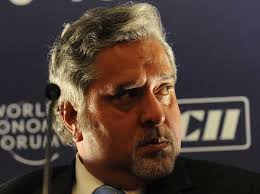 India will levy capital gains tax on investments routed through Mauritius from April 1 next year, bringing down the curtains on a contentious three decade-old rule that allowed companies to bring in billions of dollars by paying negligible taxes.
India will levy capital gains tax on investments routed through Mauritius from April 1 next year, bringing down the curtains on a contentious three decade-old rule that allowed companies to bring in billions of dollars by paying negligible taxes.
The taxes on capital gains will apply to investments made from April 1, 2017 and will be imposed at 50% or half of the domestic rate until March 31, 2019, and at the full rate thereafter.
How do people use tax havens to avoid paying taxes?
Through “round tripping” or “treaty shopping”.
How does round tripping work?
Round tripping refers to routing of investments by a resident of one country through another country back to his own country.
You get money out of India and transmit it to a tax haven with whom India has a bilateral tax avoidance treaty such as the double-taxation avoidance agreement (DTAA). In the tax haven, this money is treated as capital of a registered corporate entity. You now invest this money back in an Indian company as foreign direct investment (FDI) by buying stakes or invest it in Indian equity markets.
How does this help in avoiding taxes?
The entire purpose of this exercise is to window-dress as foreign capital your original money that you had taken out from India.
In the entire process, you end up paying zero or negligible taxes. In India, you can claim tax exemption citing the DTAA arguing that you have paid taxes in the source country. In the source country, taxes are negligible since it is a tax haven.
What is DTAA?
These are bilateral treaties signed between governments to prevent companies from being taxed twice over.
So, what was the problem with Mauritius?
Mauritius, and other tax havens, has almost negligible taxes. This was encouraging companies to route their investments in India through “shell” companies (those that exist only on paper) in Mauritius and avoid paying taxes.
How big was the problem?
At $94 billion, Mauritius has been the largest FDI source for India, accounting for 34% of total FDI in India between 2000 and 2015.
What are the changes that will plug this gap?
The changed DTAA will make it mandatory to pay capital gains tax on sale of shares in India by companies registered in Mauritius
When will the new rules kick-in?
Share sales in Indian companies by Mauritius-registered firms will be taxed at half of the applicable rate between April 1, 2017 and March 31, 2019.
If the capital gains tax in India is 10% currently, Mauritius-registered companies will be taxed at 5% during the first two years beginning April 2017. Full capital gains tax will apply from April 1, 2019.
What about previous investments?
The new rules will not apply only to investments made before April 1, 2017, meaning share sale of investments made before this date will be exempt from capital gains tax.
Which companies will benefit from the reduced tax rates during the first two years?
The benefit of 50% reduction in tax rate during the transition period from April 1, 2017 to March 31, 2019 shall be subject to a limitation of benefit (LOB) Article.
A Mauritius-registered company (including a shell or conduit company) will not be entitled to lower tax rate, if it doesn’t spend at least Rs 27 lakh in Mauritius in the previous 12 months. This is called ‘purpose and bonafide business test’.
How will impact investors?
Many foreign investors will have to redraw their strategies. The incentive to route investments through Mauritius will cease to exist once the new rule kicks-in. This could raise their tax outgo.
What about markets?
It could hurt short-term foreign investor inflows into India, particularly from companies whose investment strategies are guided by minimising taxes. This could pull down markets initially.
Are these rules related to the general anti-avoidance rules (GAAR)?
GAAR are aimed at curbing tax avoidance and aim to give tax authorities the right to scrutinise transactions that they feel have been done to avoid taxes.
Under GAAR corporations may be forced to restructure salaries of employees if taxmen conclude that these were structured only to avoid taxes. Similarly, if a foreign investment transaction from Mauritius has taken place with an intent to exploit DTAA, it will come under GAAR.
Implementation of GAAR will take place from April, 2017.
Source: http://www.hindustantimes.com/business/india-mauritius-tax-treaty-all-you-need-to-know/story-QSOlvKyt6rrN7E00S7wp9K.html
 The entrepreneurship streak appears to be stronger in the small retail business space, going by the pattern of loans disbursed by the Micro Units Development and Refinance (MUDRA) Bank.
The entrepreneurship streak appears to be stronger in the small retail business space, going by the pattern of loans disbursed by the Micro Units Development and Refinance (MUDRA) Bank.




